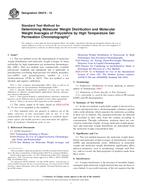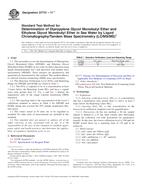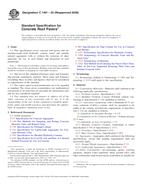1.1 This practice covers the general considerations for the quantitative determination of trace elements in water and waste water by graphite furnace atomic absorption spectrophotometry. Furnace atomizers are a most useful means of extending detection limits; however, the practice should only be used at concentration levels below the optimum range of direct flame aspiration atomic absorption spectrophotometry. Because of differences between various makes and models of satisfactory instruments, no detailed operating instructions can be provided for each instrument. Instead, the analyst should follow the instructions provided by the manufacturer of a particular instrument.
1.2 Wavelengths, estimated detection limits, and optimum concentration ranges are given in the individual methods. Ranges may be increased or decreased by varying the volume of sample injected or the instrumental settings or by the use of a secondary wavelength. Samples containing concentrations higher than those given in the optimum range may be diluted or analyzed by other techniques.
1.3 This technique is generally not applicable to brines and seawater. Special techniques such as separation of the trace elements from the salt, careful temperature control through ramping techniques, or matrix modification by the addition of NH 4 NO 3 may be useful for these samples.
1.4 The analyst is encouraged to consult the literature as provided by the instrument manufacturer as well as various trade journals and scientific publications.
1.5 This standard does not purport to address all of the safety concerns, if any, associated with its use. It is the responsibility of the user of this standard to establish appropriate safety and health practices and determine the applicability of regulatory limitations prior to use.
Product Details
- Published:
- 06/10/1999
- Number of Pages:
- 7
- File Size:
- 1 file , 55 KB


